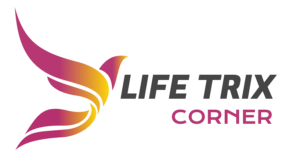In the bustling metropolis of Hyderabad and across India, the concept of work-life balance has never been more scrutinized. As businesses grapple with employee burnout, retention challenges, and the quest for enhanced productivity, a bold idea has emerged from the experimental fringes to the mainstream spotlight: the four-day workweek. But is this utopian vision of a compressed work schedule truly working, and can it be a viable model for everyone?
Case Studies: Promising Pilots and Tangible Gains
Global trials of the four-day workweek, typically involving 100% pay for 80% of the time with a commitment to 100% output, have yielded compelling results. The largest UK pilot in 2022, involving 61 companies and nearly 3,000 workers, saw an overwhelming 92% of participating companies continue with the model after the six-month trial. Key findings included:
- Improved Employee Well-being: A significant 39% of employees reported feeling less stressed, and 71% experienced reduced burnout. This translates directly to happier, more engaged teams.
- Boosted Productivity: Contrary to initial fears, many companies reported maintained or even increased productivity. Microsoft Japan famously saw a 40% jump in productivity during their four-day week trial, demonstrating that focused work in fewer hours can be more effective than prolonged, less efficient stretches.
- Enhanced Recruitment and Retention: Businesses found it easier to attract new talent and retain existing employees, a crucial advantage in today’s competitive job market.
Closer to home, while widespread adoption is still nascent, discussions around compressed work weeks are gaining traction in India’s tech hubs and innovative startups. The pandemic-induced shift to remote and hybrid models has opened the door to greater flexibility, making the four-day week a logical next step in some sectors.
Productivity Shifts: Quality Over Quantity
The success of the four-day workweek hinges on a fundamental shift in mindset: moving from a focus on “hours worked” to “outcomes achieved.” Companies implementing this model often report that employees become more disciplined with their time, prioritize tasks, and identify inefficiencies that can be eliminated. Meetings become shorter and more purposeful, distractions are minimized, and the pressure to deliver within a tighter timeframe often sparks greater innovation and efficiency.
The extra day off provides employees with crucial time for rest, personal development, family commitments, and pursuing hobbies—activities that contribute to overall well-being and, in turn, recharge them for a more productive workweek. This virtuous cycle can lead to reduced sick leave and a more vibrant, energized workforce.
Challenges and Considerations: Can it Work for Everyone?
Despite the promising data, the four-day workweek is not a one-size-fits-all solution.
- Industry Specificity: Sectors requiring constant client-facing availability (e.g., retail, healthcare, hospitality) or continuous production (e.g., manufacturing) face unique logistical hurdles. Creative solutions, such as staggered shifts or team rotation, are often necessary.
- Compressed Hours vs. Reduced Hours: Not all four-day weeks are created equal. Some models compress 40 hours into four longer days, which might mitigate work-life balance improvements. The most beneficial model generally involves a reduction in total working hours with no loss of pay.
- Cultural Adaptation: Implementing such a significant change requires strong leadership, clear communication, and a culture of trust and accountability. Without proper planning and employee buy-in, the transition can be challenging.
The Future of Work-Life Balance
The four-day work week is more than just a scheduling tweak; it’s a reflection of a broader societal re-evaluation of work’s place in our lives. As automation and AI continue to evolve, the question of how humans spend their time, both productively and personally, will become even more pertinent. The ongoing experiments serve as valuable blueprints, guiding us towards a future where work is not just a means to an end, but a sustainable part of a balanced and fulfilling life. For businesses in Hyderabad and beyond, embracing this evolution could be key to attracting top talent and building a truly resilient and thriving workforce.















